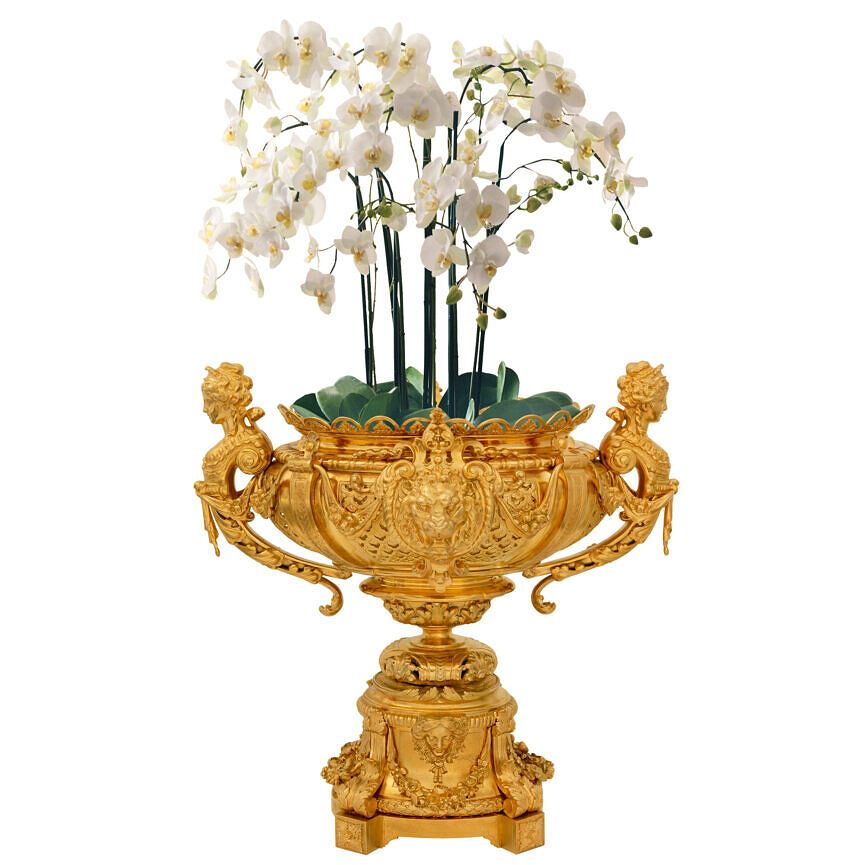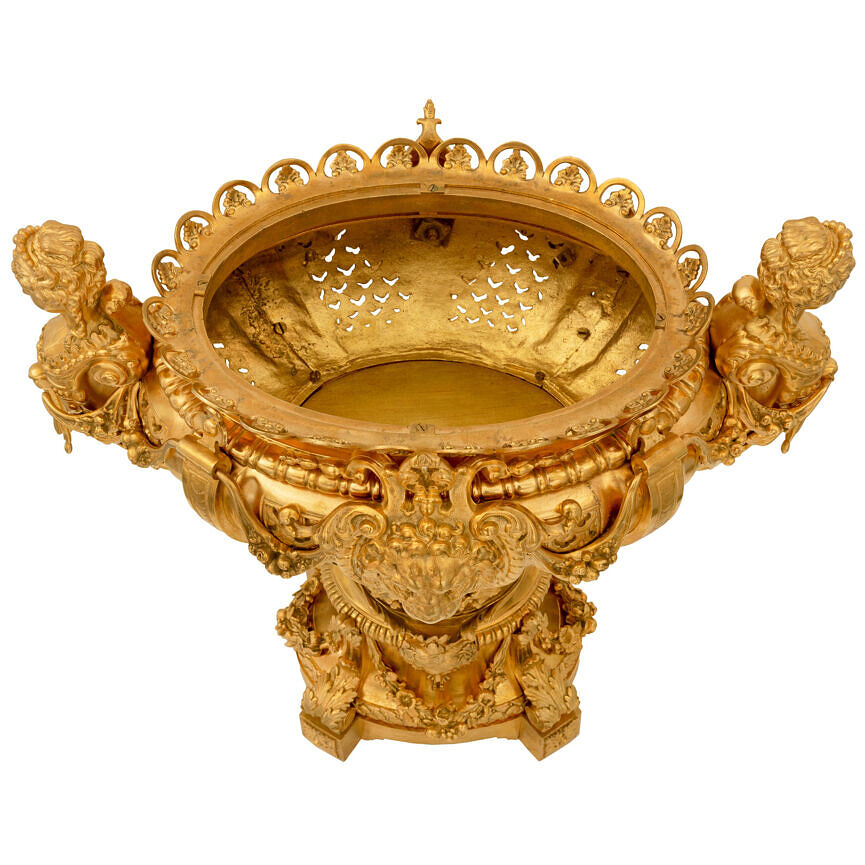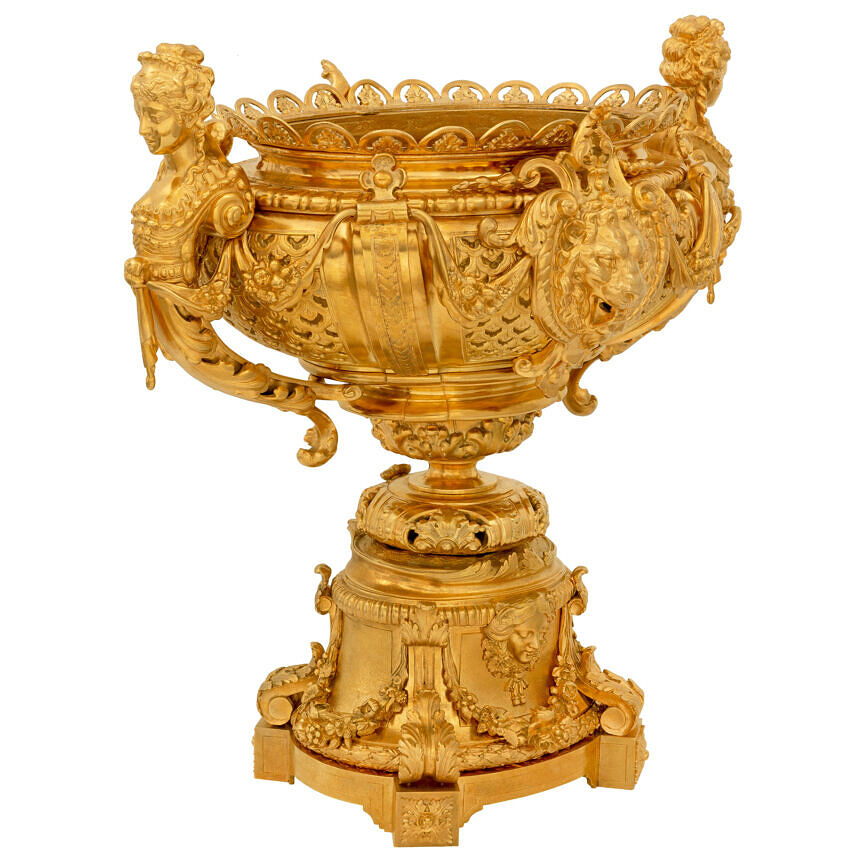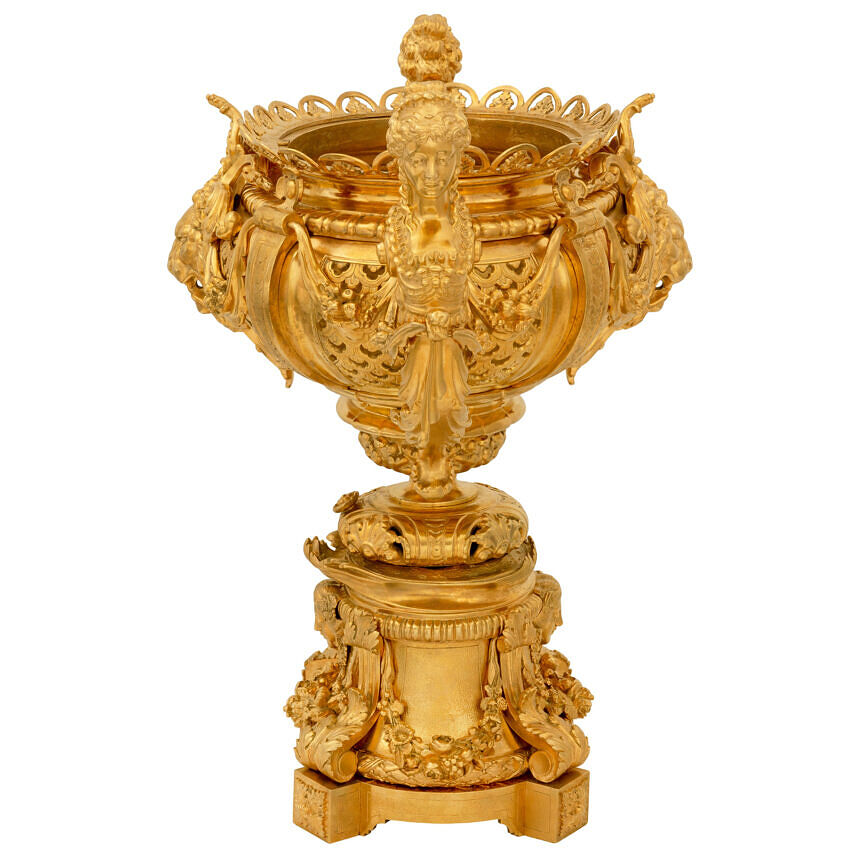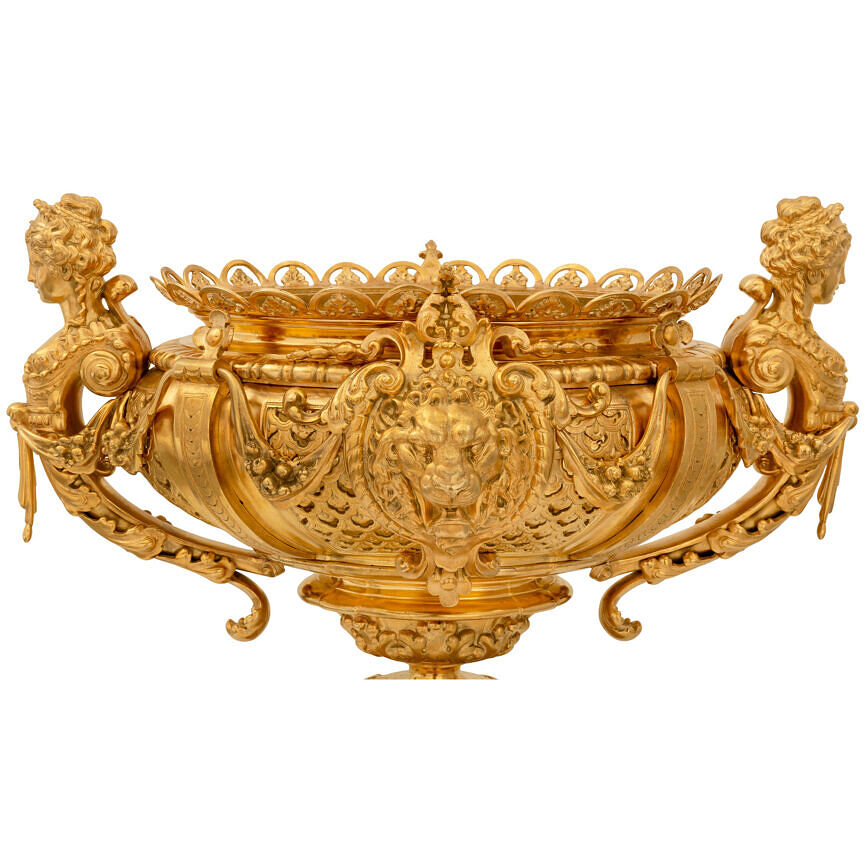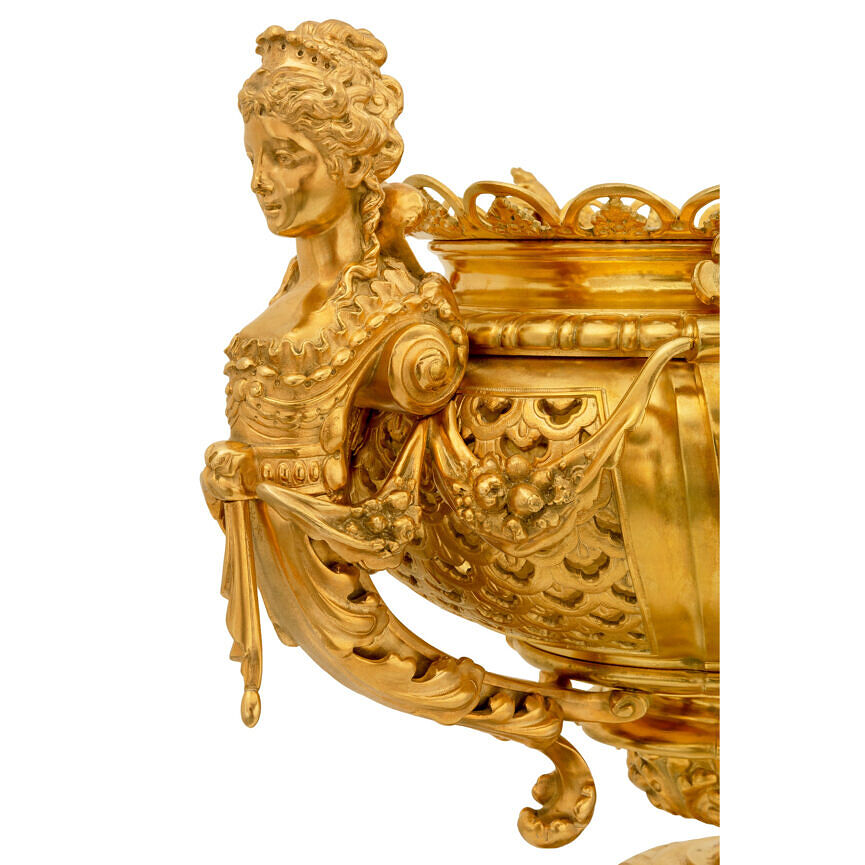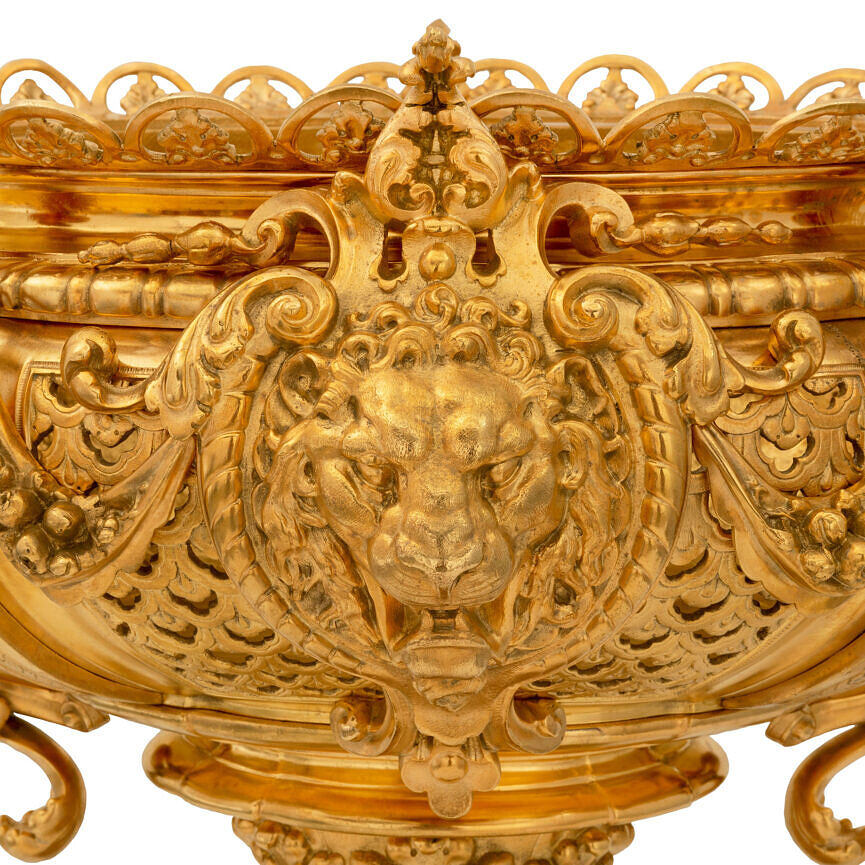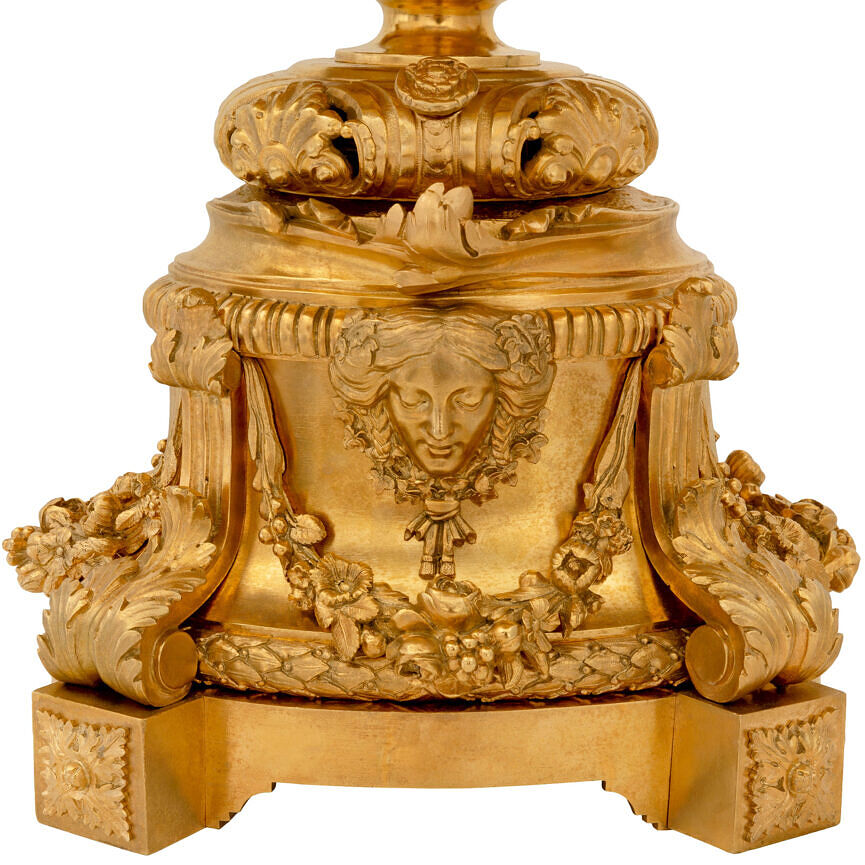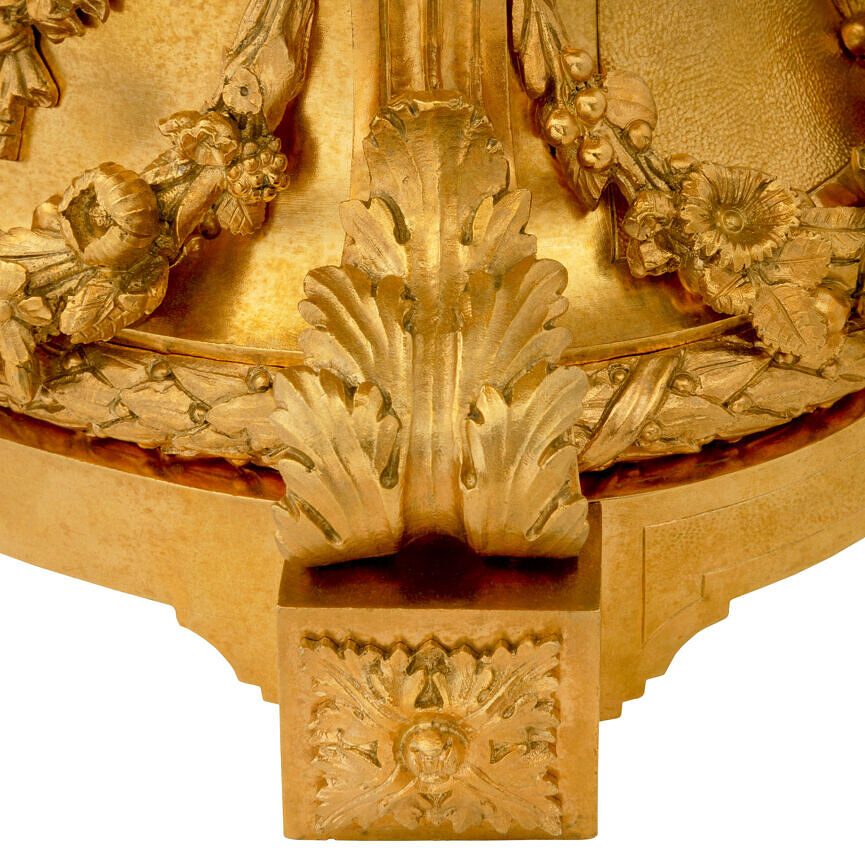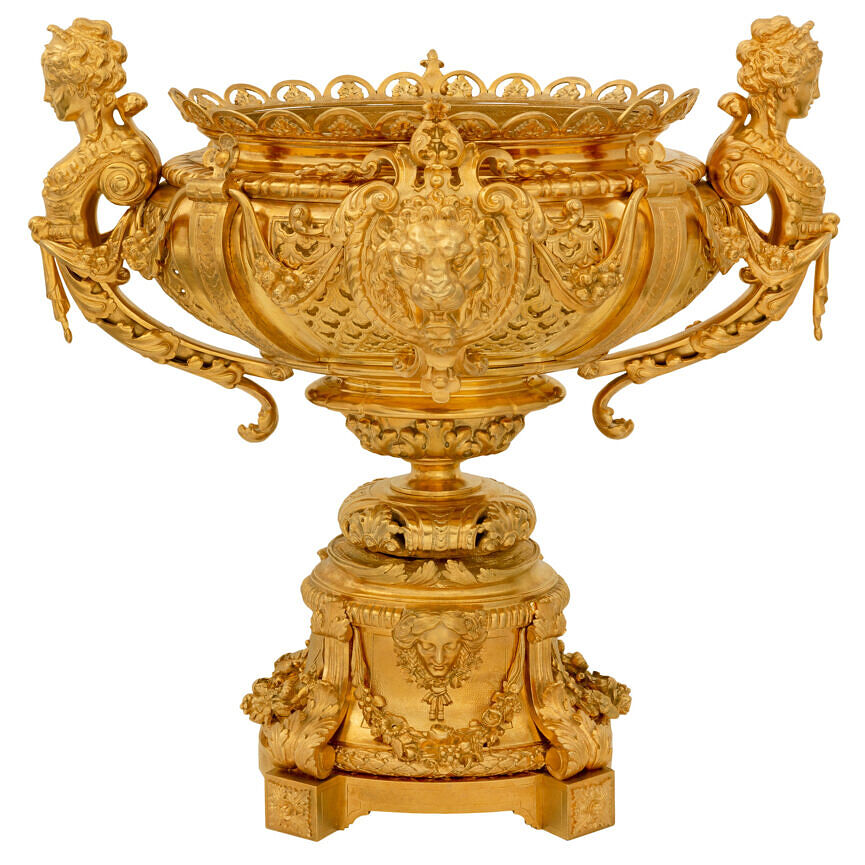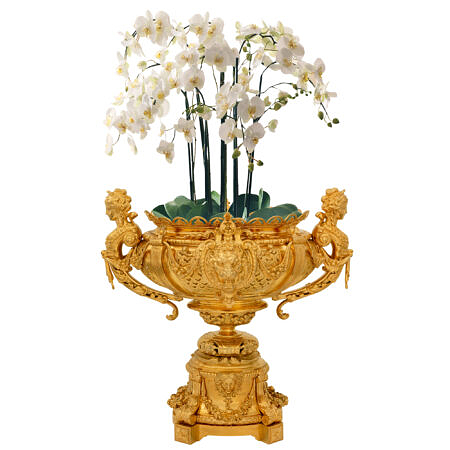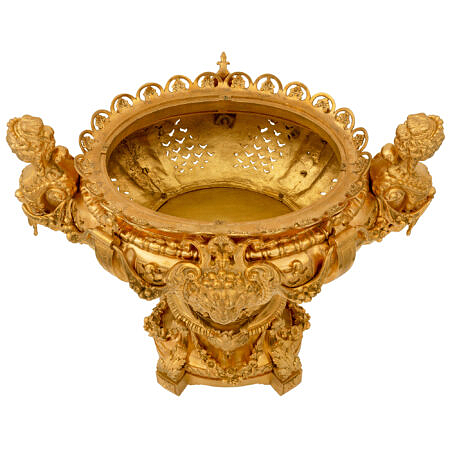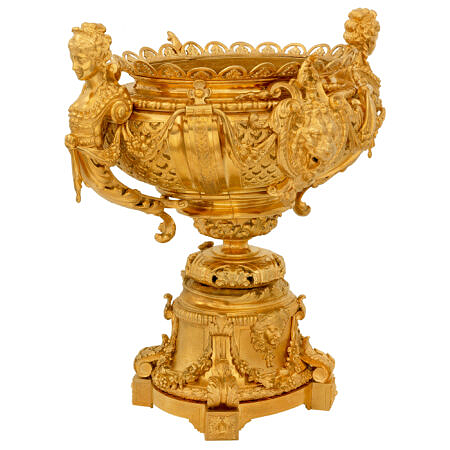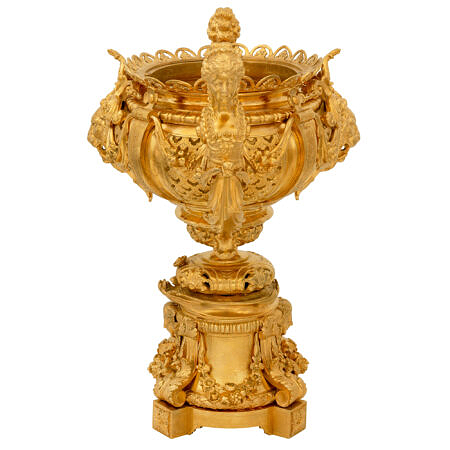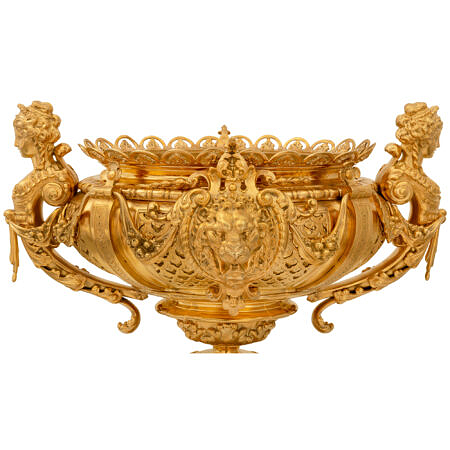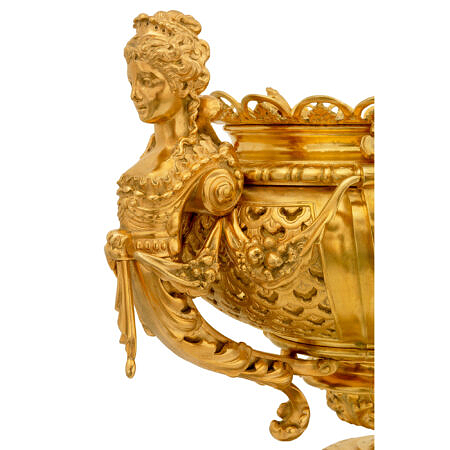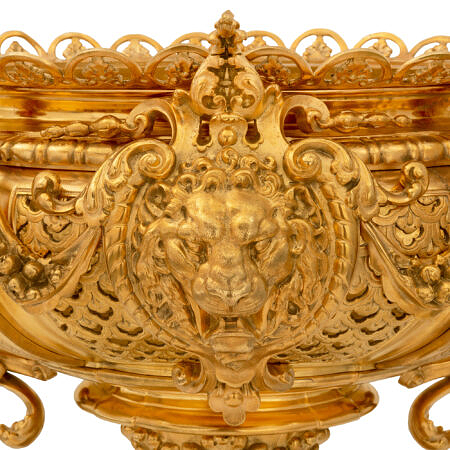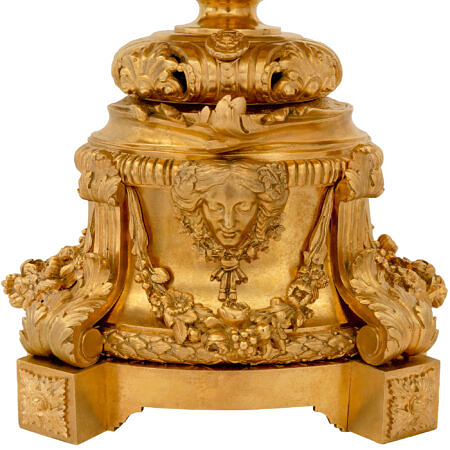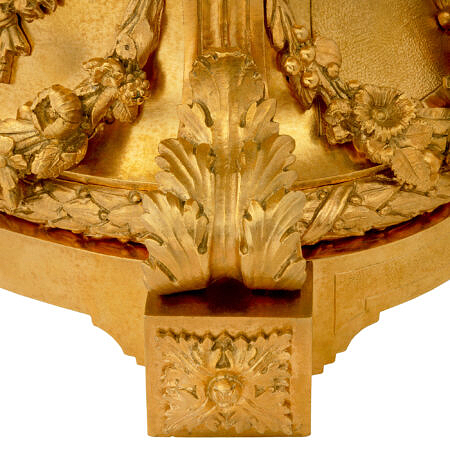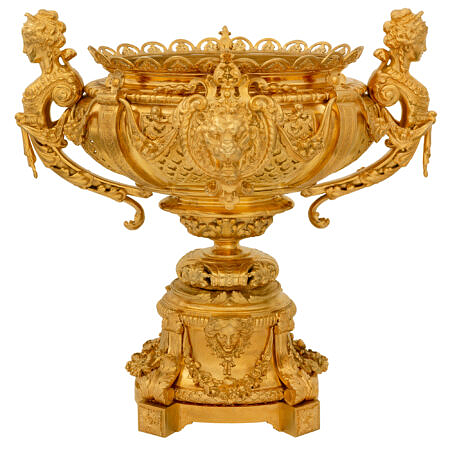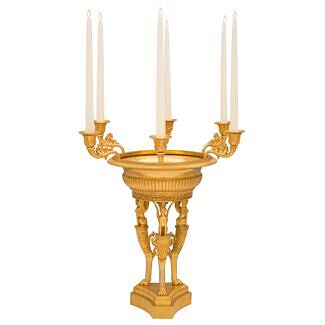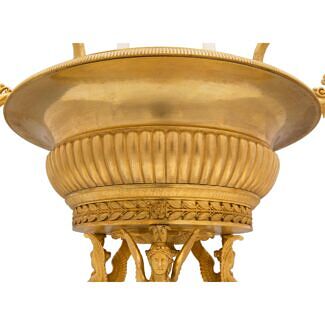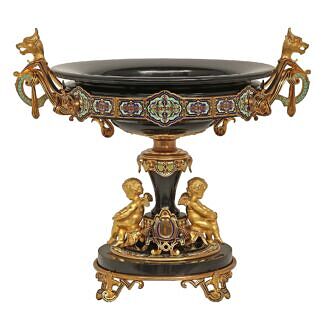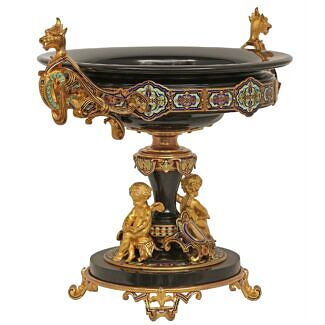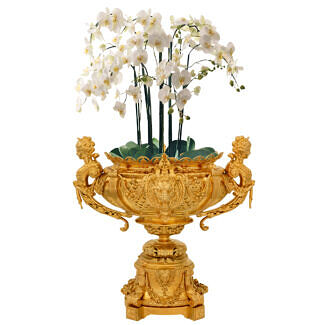A French 19th century Renaissance st. Belle Époque period ormolu centerpiece/urn
Sorry, This item has sold
An impressive French 19th century Renaissance st. Belle Époque period ormolu centerpiece/urn. The urn is raised by a most decorative base with fine block rosette feet below large richly chased scrolled acanthus leaves centering a striking maiden's mask and an... — Read More
An impressive French 19th century Renaissance st. Belle Époque period ormolu centerpiece/urn. The urn is raised by a most decorative base with fine block rosette feet below large richly chased scrolled acanthus leaves centering a striking maiden's mask and an intricately detailed swaging floral garlands. The striking urn above displays handsome richly chased roaring lion's head set on a clover lattice designed background and flanked by additional swaging floral garlands. At each side are beautiful graceful maidens in elegant dentil dresses with large scrolled acanthus leaves. A most decorative reeded and pieced palmette designed band extends along the rim. Also finished on the inside and centered by a fine ormolu rosette. — Read Less
- Item # 11449
-
H: 20 in L: 19.75 in D: 14 in
H: 51 cm L: 50 cm D: 36 cm
- France
- 19th Century
- Ormolu
- Belle Époque Read More, Renaissance st. Read More
Related products
-
# 5400 - H: 20" L: 18" D: 18"
-
# 7235 - H: 16" D: 19"


